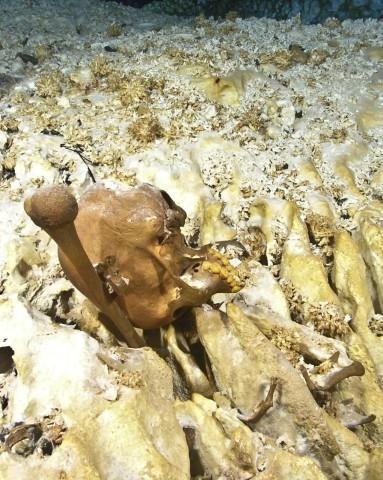Skeletal remains suggest Americans have one ancestral origin
Found in what was a Peninsula some 12,000 years ago, the remains of a young girl may hold clues to where the earliest of Americans came from. Carbon dating and DNA extrusion helped to pinpoint the timeframe of her demise, and further studies suggest our ancestors' ancestors may not have come from where we think.
Now hundreds of feet under water, a young girl once strolled the Yucatan Peninsula in Mexico. Falling into a deep cavern, she broke her pelvis, and was likely killed from the fall itself. Found in 2007 by divers, her skeleton was remarkably intact, even having teeth — a rare find in such an old specimen.
Before the last ice age, a land mass joined what is now Alaska and Siberia, where it's believed people from Asia migrated from, and were the forefathers for what we now know as Native Americans. As time passed, it was believed they spread to other parts of North America.

Dubbed Naia by the divers who found her, it's now believed she is the ancestor's ancestor, so to speak. She shares common physical traits with other ancient skeletal remains, but DNA sequencing with modern Native Americans. To date, no strong link has been established between modern humans and ancient skeletal findings.
The older skeletons don't look like modern people, which opened the discussion for a second migration, possibly from another area. Naia helps to solve that debate, and possibly forge that Native Americans came from a single area, likely in Asia.
Extracting mitochondrial DNA from the teeth, and dating mineral deposits in the bones are what gave scientists the best idea from when she was last alive. Ripan Malhi, a professor of anthropology at the University of Illinois, said "We were able to identify her genetic lineage with high certainty. This shows that living Native Americans and these ancient remains of the girl we analyzed all came from the same source population during the initial peopling of the Americas."
